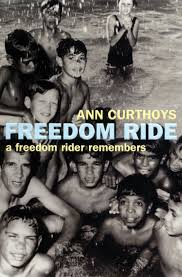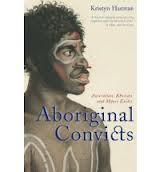Australian Women’s History Network Keynote Address: Jill Matthews, ‘Good and Mad Women: Histories of Gender then and now’.
“Should I even be at this session?” I wondered as I filed into a steeply-raked lecture theatre to hear Jill Matthews speak on her book Good and Mad Women, written in 1984 and yet another of the books that I will read one day. Possibly Matthews thought the same thing, as she declaimed any interest in speaking at writers’ festivals and meet-the-author functions, believing that the author’s work should speak for her. But I’m so glad that I was there, to hear a very human and wide-ranging reflection on the political, cultural and academic influences on the writing of this very influential book thirty years ago.
Born in 1949 into the stultifying stolidity of the Menzies and Playford state governments in South Australia, she was the first in her family to attend university on a Commonwealth scholarship. As an undergraduate and then postgraduate, she threw herself into the revolutionary activism of the late 1960s and early 1970s of Vietnam, Marxism, Women’s and Gay Liberation. Her studies co-existed with twirling the Gestetner handle to print off flyers and newsletters, conducting sit-ins, performances, reading and study groups and meetings, meetings, meetings. Among her interests was anti-psychiatry which she drew upon when she embarked on a PhD looking into the admission records of women admitted to the Parkside Lunatic Asylum/ Glenside Mental Hospital at a time when homosexuality was viewed as a mental illness that could be ‘cured’ by lobotomy and aversion therapy.

The book Good and Mad Women emerged from her Ph D but had to be substantially changed to broaden the focus from South Australia to the eastern seaboard generally, strip out the jargon and shift the focus from “madness” to the everyday life of women. On re-reading both the thesis and the book in preparation for this talk, Matthews found herself pleasantly impressed by them both. She recognized anew the patchiness of the research available at the time; noted how visible her concern with methodology was, and she recollected how miserable the research made her- not so much in terms of doing the research but the emphasis on women as victims. Where was the fun? she asked herself. It came as no surprise then that her later work moved to examine women’s bodily pleasure in dance halls and film, although none of her later work had the success of Good and Mad Women. This wonderful, funny, engaging presentation finished with an exhortation over the importance of hope as a way of holding our different lives together.
The Whitlam Government 1972-75: a foundational moment? Transforming Political Space: Whitlamism as Quality of Life
There is an all-day stream of the conference devoted to different aspects of Whitlamism. I missed the first one ‘From Inspiration to implementation” but caught this second one that dealt with the human policies of the Whitlam government.
Michelle Arrow gave a presentation about the Royal Commission into Human Relationships, that was championed by the Women’s Affairs Advisor Elizabeth Reid in the wake of the divisive debates about abortion law reform. Chaired by Elizabeth Evatt with Rev Felix Arnott and Anne Deveson, it was one of thirteen Royal Commissions initiated during the Whitlam years, and it spawned five volumes and 500 recommendations that extended far beyond abortion into human relationships more generally. Derided by some at the time as “a giant talkback show”, by the time it released its interim findings during the 1977 election campaign, it was greeted with outrage and largely disowned by then-Prime Minister Malcolm Fraser, minister Bob Ellicott and also by-then Opposition Leader Whitlam, under whose auspices it had begun. Although it was never debated in Parliament, it did guide policy in later decades, even though its calls for state intervention ran counter to Fraser’s stance on non-intervention.
The two other papers were quite complementary, both dealing with regional policy as a way of sidelining the states and improving life at the lived, community level. Lyndon Megarrity’s paper noted that there had been an attempt after WWII to form regional development committees but these were abandoned by 1949 by both Chifley and Menzies who had other priorities. Whitlam himself lived in the suburbs and appreciated the planned nature of Canberra , and so when developing his ideas he put federal funding of local government on the agenda. He saw support for the local as part of the national interest, but felt that it was best addressed at a regional level through the creation of 76 regional organizations. There was no constitutional basis for this action, and the referendum held in 1974 to allow borrowing for local government failed. After 1975 the regional councils were dismantled, but regionalism still exists, as evidenced perhaps by Abbott’s recent proposal for development of the ‘northern region’ of Australia.
Melanie Oppenheimer’s paper examined the Australian Assistance Plan which combined the three elements of regionalism, federalism and voluntarism. It delivered social welfare reform and community development through Regional Councils for Social Development, thus by-passing the states. Although Fraser promised in 1975 to retain the Australian Assistance Plan, it was scrapped two years later. She is working on a project with two other historians, examining the archives of the Loddon Campaspe Regional Council, supplementing the documentary record with oral histories with former workers and participants. The Regional Council encompassed multiple municipalities and was based in Bendigo, and the funding that flowed from the Australian Assistance Plan supported Meals on Wheels, the employment of a youth development officer and adventure playgrounds. There was an emphasis on youth, and evidence-based practice.
Love and Law in the Colonial Archive
Penny Russell started this session with a paper ‘Exposing the ‘Family Man’: Seduction and Credit in Colonial Sydney”. The said ‘Family Man’ was John Thomas Wilson, an apparently successful iron monger, thoroughly embedded with the moral and business leaders of Sydney, despite the fact that he had taken up with an actress Marie Taylor at the Theatre Royal, in plain sight. In March 1836 he was exposed in print by J.D. Lang’s Colonist newspaper (in a poem possibly written by Lang himself) which made reference to Wilson’s earlier affair with a Miss Marion Cavill, a former Lang emigrant. A horse-whipping of the editor and charge of assault ensued. Tit-for-tat court cases and assaults followed, drawing in Wilson, Lang, Miss Cavill’s brother Mr Wylie- a “very blokey” story, as Russell points out. Although the sexual scandal seemed to stop here, it had financial implications for Wilson and by early 1837 Wilson left for England leaving huge debts behind him. News of his debts preceded him, and when he returned to Sydney in 1838, he became a successful auctioneer, only to abscond a second time with his clients’ goods leaving even more debt. At this stage, the Sydney Gazette published extensive news of Wilson’s indebtedness, imposture and immorality. A series of betrayals and suicides followed, in what is an incredible colonial story of seduction: seduction of women for their sexuality and men for their money.
Kiera Lindsey’s paper “When the Law Sleeps Justice Must Awaken: Nineteenth-century abduction cases and the colonial newspapers” prefigures her forthcoming book “Mary Ann: A Colonial Romance” which promises to be a rollicking read. Elopement and abduction cases came before colonial courts, and were commented on at length by local newspapers. Her study of abduction cases in newspapers, starting in 1832 and finishing in 1932, uncovered 580 individual cases. Abduction law at the time took no account of the woman’s consent, but as the century wore on the newspapers became more colourful in their reporting of such cases, and sympathy shifted from fathers to thwarted lovers, even though such cases remained illegal. Two Mary Anns in Sydney in 1848 slipped away from their parental homes; one with a young man who married her; another with a man more than 20 year older than her who abandoned her. In the latter case, Bell’s Sporting Life became increasingly critical of the rascally behaviour of such men. Another case in Gundagai in 1872 involved an Aboriginal tracker and a 16 year old, who ran away to marry. The racial identity of John Gallagher became the main issue of press commentary; Miss Noonan refused to condemn the prisoner. The defendant was found guilty and sentenced to 18 months hard labour. Press reports varied, some making much of the prisoner’s racial identity, others blaming Miss Noonan. In the final case she discussed, the Syrian community in September 1892 was in uproar over an elopement which provoked press commentary condemning bride-price and oppressive parental behaviour in Syrian law.
Finally Alecia Simmons spoke on “Gay Lotharios and Unsuspecting Eves” dealing with maintenance provisions breach of promise cases between 1823 and the 1970s. She started with the story of Esther Stewart, who was sent to the Newcastle Benevolent Asylum when she fell pregnant to John Joseph Duggan, a man with whom she had ‘stepped out’ with for three years. When she sued him for breach of promise, she was awarded 1000 pounds. Breach of promise files, particularly in early cases, contain love letters, tickets etc. as proof, because the parties themselves could not give evidence. Such cases often involved working class women, who needed to prove their chastity while pursuing men for money, with the law suit as a supplement to maintenance. Breach of promise was an overwhelmingly feminized phenomenon, and women were overwhelmingly successful (76% of cases). 44% of the women had illegitimate children. South Australia formed quite an exception because it allowed breach of promise to be heard in the local court (compared with the other states which heard such cases in the Supreme Court). The defence for breach of promise was the bad character of the woman and the cases turned on what constituted immoral conduct. She suggests that the courts were attempting to shift financial responsibility for single mothers and their children from the community and charitable organisations, to the man. However, it was difficult to prove paternity, a maintenance order only applied in the colony in which it was issued and cases could only be brought after the birth of the child. However, breach of promise cases were likely to be more successful and provided a lump sum rather than an ongoing payment.
The Whitlam government 1972-75: a foundational moment? Whitlam and the Australian Political Tradition.
Greg Melleuish warned against being captured by myths- in particular the way that the Whitlam government was came to seen as the party of progress, compared with the deadness of the latter Liberal Party years. Yet the Labour party had also been derided as anti-intellectual and tainted with Tammany-Hall politics, and both parties were led by men who were born in 1914. It was not a foregone conclusion that the newly-educated classes would jump to the left. What was contingent was the way that Whitlam emphasized the ALP as the party of ideas, attractive to the new knowledge class. His paper drew heavily on Manning Clarke and Donald Horne, Hancock and Rand. He argues that Whitlam was attempting to modernize the ALP, a project associated with the extension of education inaugurated by Menzies. The real opposition to Whitlam was not Menzies, but Santamaria. The subsequent failings of the ALP were mythologized as a tragic narrative, dominating the historic record as the party of progress, rather than seeing continuities from Menzies to Holt to Whitlam and Fraser.
Stuart Macintyre sees the 1940s and 1970s as bookends of a period of wage growth, decline in inequality, increase in participation in education and improvement in health provision and cultural life. His paper compared the Labor governments of the post-war 1940s and1970s, the needs they identified and the techniques they employed. Whitlam often made reference in conversation to the post-war reconstruction Labor government but this was not made explicit in policy terms. The were parallels in the methods that both these Labor governments used: Chifley and Coombes instituted commissions of enquiry as a way of laying the groundwork for change, a technique also used by Whitlam. Both proceeded by referendums. In the 1940s the Labor Party was able to implement its changes in a lasting way, compared with the Whitlam government, which saw many of its changes wound back.
Finally, Carol Johnson spoke on ‘Gough Whitlam and the re-imagined citizen-subject of Australian social democracy’. Whitlam saw himself as the heir of Curtin and Chifley. She argues that it is necessary to recognize Whitlam’s expansion of the view of the citizen-subject of social democracy. Whitlam spoke of ‘positive equality’ which could be achieved by extending already-existing programs, especially in education. Whitlam began with the premise that protecting working class employment and conditions was no longer necessary: instead he saw positive equality through the combined resources of the community. Chifley saw the male wage-earner head of household as the primary citizen-subject, (although Johnson would argue that Labor was always a social-democratic party). Whitlam argued that women were re-defining and re-describing the political and he placed more emphasis on education than his predecessors as a means of quality of life and equality of opportunity. Chifley supported the White Australia Policy: Whitlam argued for integration rather than assimilation. With increased inflation and increasing unemployment in 1974, Whitlam urged wage restraint, but he later conceded that he was not able to bring the unions along with him. Both the right and left now point to a split in the ALP between workers and progressives, but Whitlam did not see this way. Although when push came to shove in harder economic times, male labour was protected, we should not overlook the importance of Whitlam’s reimagining of the citizen-subject.
Keynote Address: Ann Curthoys ‘Race, Liberty, Empire: The Foundations of Australian political culture’.
This address, which was recorded by the ABC and will be heard on the Big Ideas program at a later date foreshadows the research she will be undertaking with Jessie Mitchell for a book to be called ‘Taking Liberties’. Their research will combine two separate historiographies: that of aboriginal dispossession (tragedy) and colonial political history (triumph). They will look at all the states of Australia, because the issue of self government arose for each colony at a different stage of indigenous/settler interaction. Indigenous people responded differently, depending on their experience of colonization; and the term ‘settler’ is also complex, depending on class, nationality and gender. The ‘over-determined’ moment of self-government came at the conjunction of five major developments: the failure of ‘protection’; the strengthening of racial thinking exemplified by the Great Chain of Being; the perceived inevitability of Indigenous extinction; the increasing desire for self-government and British rights, and the metropolitan turn towards self-government.
When granting self-government to New Zealand and Canada, Britain tried to retain control over Aboriginal policies, but did not even attempt when granting self-government to Australian colonies. It became the responsibility of the separate governments of each colony to devise their own policies which led to variation between the colonies. In Victoria and South Australia there was more evidence of humanitarianism and Protection policies, although in Victoria this gradually became a system of surveillance and control while South Australia still had a large, moving frontier. In NSW there was a strong belief in imminent extinction, so little policy was implemented. Queensland expanded its Native and Mounted Police.
Western Australia formed a major exception. Because of its small population, the issue of self-government did not rise until long after the other colonies. British policy had changed by this time, after involvement in wars in Natal and New Zealand, and it was concerned over harsh treatment in the West Australian pastoral and pearling industries. As a result, in Section 70 it maintained British control over Indigenous affairs, but it was strongly resisted by Forrest and West Australian settlers and repealed. However, Section 70 had a long history in Aboriginal memory, right up until 2002.
So, wait for the ABC Big Ideas repeat to hear this in a much more coherent and eloquent form!
Presenters: again, if I have misrepresented your presentation or made errors, please contact me at the email address in the ‘About’ section.



























